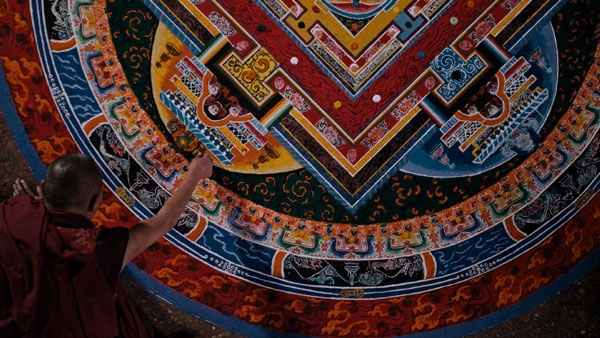 |
|
Documentary film Roof of the World shows details about everyday lives and natural landscapes on the Qinghai-Tibet Plateau. [Photo provided to China Daily] |
"It means, in a way, that they still don't trust local productions," says Wang. "But we've learned a lesson: A change in the method of storytelling can result in completely different communication effect."
Roof of the World owes the bulk of its success to detailing daily lives and capturing the people's natural beauty, says Zhang Yun, director of the Institute of History Studies under China Tibetology Research Center.
"But through these everyday scenes, you can see how Tibet has developed, what has changed and what has not," Zhang says. "The use of slow motion (in some places), to show things in an unhurried way, helps to bring out some of the essential spirit of Tibetan culture."
It's also admirable that these details are presented with "anthropological precision", says Zhang Yiwu, Peking University professor of Chinese Studies. It approaches the major theme of man and nature by truthfully recording how small lives comply with, and consequently enrich, nature, he adds.
There are also themes, such as animal welfare and rights, which are new concepts to Chinese but were explored in the nature-themed film, Zhang says.
An English version of Roof of the World has finished airing on CCTV's English channel. Global audiences are also expected to see it via the international networks of National Geographic Channel, which recently licensed the documentary. It's also likely to be available in the future via a number of other mainstream TV stations overseas.
Many Chinese productions haven't been successful abroad, says Yu Guoming, professor of journalism at Renmin University of China. Chinese productions like to sell concepts in the beginning and later resort to "grand narratives", he says, whereas Westerner viewers favor the stories and details.
The success of Roof of the World, however, lies largely in tentatively altering its logic of expression, which makes it more adaptable to international tastes, says Yu.
"We've made it clear in the beginning that we were not filming something to propagate Tibet or the Qinghai-Tibet Plateau. We want to show, in completion, what people's lives are like in such a special geographical environment," says producer Wang.
"We are also determined to follow the common patterns of documentary making in the world, or in our words, to tell China stories in a global expression."
A 90-minute feature version of the documentary will be aired at the Beijing International Film Festival on Thursday.
|
|
|
|
|
|
|
|
